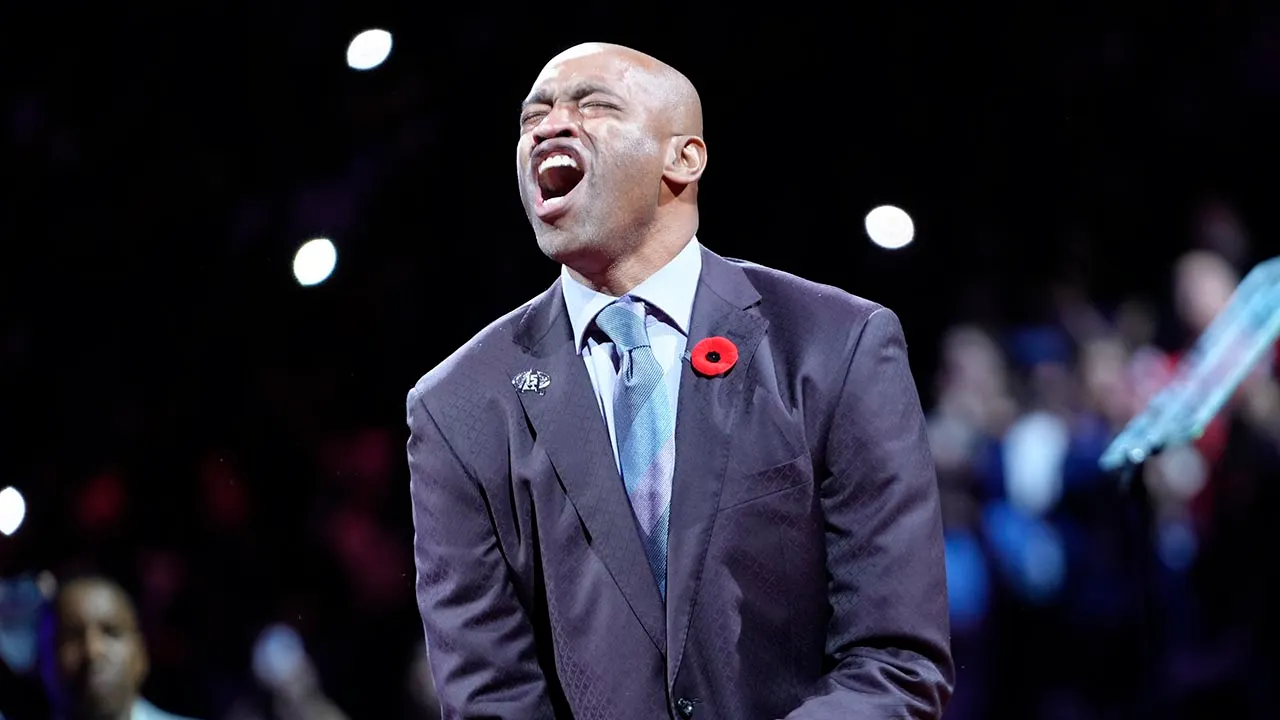The bird was still. But as the gardeners approached, it turned its head and blinked.
“This is the first instance that we are aware of regarding wildlife getting caught in a sculpture,” Brett McNish, the garden’s supervisory horticulturist, wrote in an email. “Occasionally, we see hawks momentarily perched on other taller sculptures in the garden, but never on Eraser. This is the first Owl seen in the garden.”
The six-acre garden, which opened in 1999 and sits on the north end of the National Mall, is home to about 20 modern sculptures and has a large fountain at its center. The collection includes several iconic artworks, including the red and blue eraser, sculpted by Claes Oldenburg and Coosje van Bruggen.
There is a lot of wildlife in the garden, including dozens of species of birds and small mammals, McNish said. Hawks mainly like to sit on the Graft, a stainless steel sculpture of a leafless tree, though they tend not to stay for long. The gallery’s carpenter shop also custom built a duck ramp to help ducklings that could otherwise “not make it over the various lips, weirs, and edges” of the garden’s fountain, McNish said.
“Our goal is, of course, to preserve and maintain the sculptures and plantings, while peacefully coexisting with the wildlife in the Garden,” he said.
But then came Friday the 13th and the extraordinary owl in the eraser. It was unclear how the owl got into its predicament, but staff sprang into action. “It clearly needed help,” McNish said.
Workers hauled out a ladder and steadied it under the eraser. McNish, feeling “slightly anxious” from the bird’s thrashing as staff neared, put on goggles and heavy-duty rose-gardening gloves for protection. He climbed the rungs and extracted the bird.
The gallery’s sculpture conservation department provided a quilted cotton blanket normally used to move artwork to swaddle the owl, and McNish said that within an hour of its rescue, the owl was delivered into the care of City Wildlife, an animal rescue center in D.C.
“It was extremely lethargic, and it looked really sad,” said Jim Monsma, City Wildlife’s executive director. “An owl during the day should not just be lying there in a box. It should be trying to fly away. It looked like it had just given up: ‘This is all too much. I’m throwing in the towel.’”
So began its stint in rehab. Staff evaluated the owl, X-rayed it and found no broken bones. But its right shoulder was swollen, its “gums” were pale and it wouldn’t eat, said Sarah Sirica, a veterinarian and City Wildlife’s clinic director.
The clinic put the owl on pain and anti-inflammatory medication, injected it with an electrolyte solution around the base of its leg and put it in a private room in a large cage that was lined with cloth so it wouldn’t damage its wings. The clinic bought frozen dead mice, thawed them and left them in the cage overnight — which is when owls normally eat — but the owl didn’t touch the food. So staff hand-fed it: One person held the owl, while the other, sometimes Sirica, wore gloves, opened the beak and put pieces of chopped-up thawed mice into its mouth, “a finger length down,” Sirica said.
After about a week, Sirica deemed the owl healthy enough to travel; the swelling on its shoulder had gone down, and its gums were pink again. On Oct. 21, a City Wildlife volunteer drove the bird to Tri-State Bird Rescue & Research in Newark, Del. Upon arrival, staff at the facility placed it directly inside a 100-foot-long, gravel-floored flight enclosure for “prerelease flight conditioning,” said Lisa Smith, the executive director of Tri-State Bird Rescue.
“It gives them the opportunity to have a long flight. Then we can evaluate that they are flying properly — you can’t do that in a small enclosure,” Smith said. “You have to see multiple flaps. Also the enclosure is 20 feet high, so you want to make sure they can get from the ground up and make it from one end to the other at that height.”
Tri-State Bird Rescue has admitted about 2,800 birds so far this year, Smith said, including 275 hit by vehicles and 154 glass-collision victims. Other common patients include victims of cat attacks, ducklings that fall into storm drains, and birds that lose their nests during storms or get caught in sticky glue traps. But eraser owl was a novelty.
“I don’t know that we’ve ever had a case before of a bird being entrapped on a sculpture,” Smith said.
In the enclosure, the owl was given food and ate well. After two days, it proved it was back in flying form and ready to be released into the wild.
Tri-State Bird Rescue normally will return an adult bird of prey to the area where it was found, but it avoids transporting younger raptors because they can injure their wings in the carrier. Besides, as juvenile birds of prey become adults, they often have to find territory away from where they were raised anyway, Smith said.
“The parents will kick them out of the area. They will say, ‘Get out. This isn’t your area,’” she said. “For the birds’ safety, we tend to release them here. It’s good habitat. It’s migration season.”
And so, on Monday, staff went to retrieve the owl from its enclosure.
Then, they released it from the grounds of the rescue center — surrounded not by art but by nature and forests, bursting with colors from the turning leaves of autumn.















































